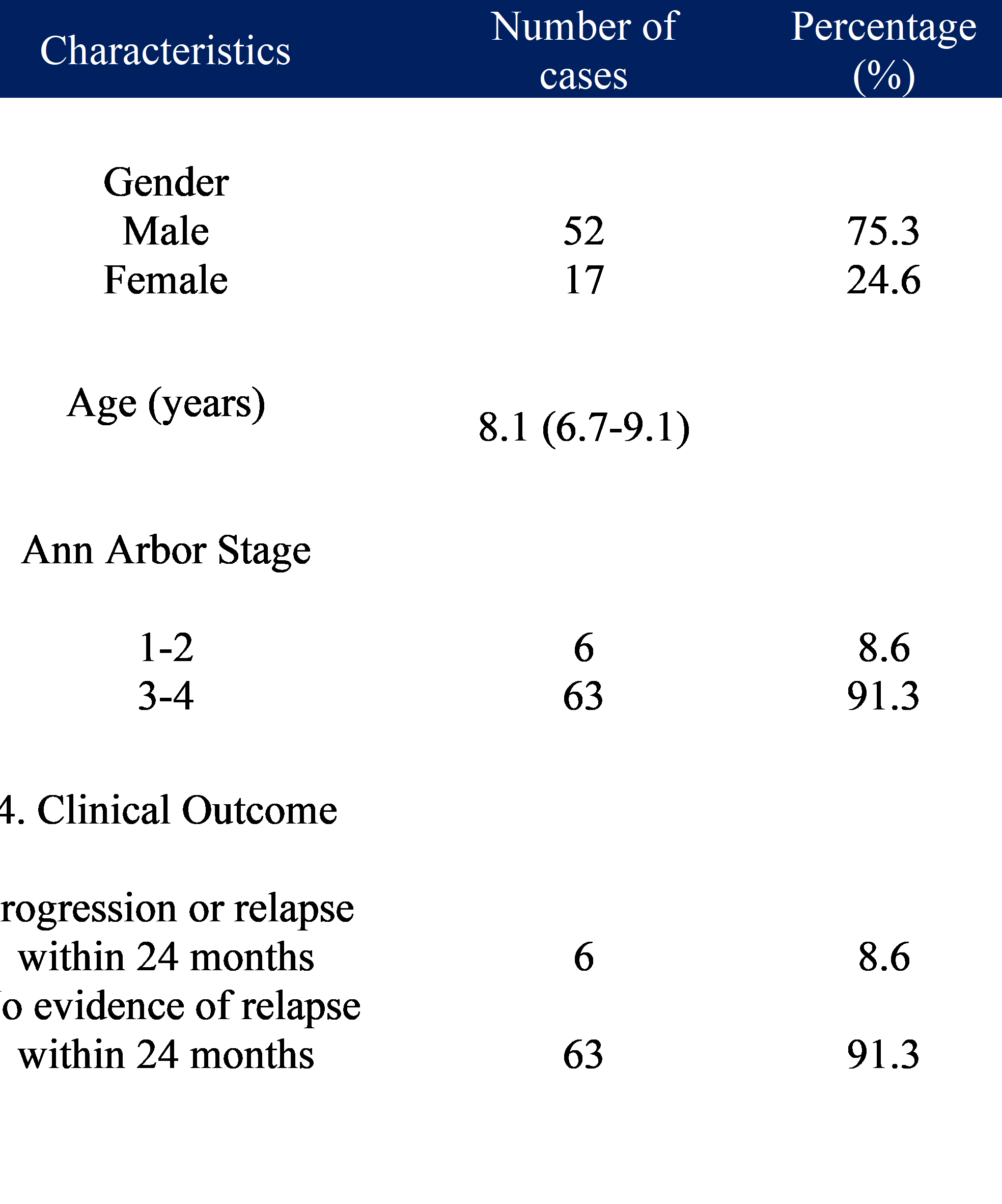Harnessing the prognostic potential of CT imaging in pediatric lymphoma: an in-depth analysis of disease evaluation and outcomes
Keywords:
Pediatric lymphoma, Computed tomography, Prognosis, Outcomes, Regression, Risk stratificationAbstract
Introduction: Pediatric lymphomas are a significant childhood malignancy primarily treated with chemotherapy. While CT imaging is crucial for disease evaluation, its prognostic value remains under-explored. This study investigates the potential of CT characteristics to predict treatment response and clinical outcomes in pediatric lymphoma patients. Investigate the prognostic value of CT characteristics in pediatric lymphoma treated with chemotherapy.
Materials and Methods: Retrospective analysis of 69 patients' medical records and CT scans. CT features (regression, size, nodal appearance, site involvement) were correlated with treatment response (regression, stable disease, progression, relapse, resolution) via univariate analysis.
Results: Most patients (76.8%) achieved good outcomes with tumor regression. However, a subset displayed stable disease (11.6%), progression (7.2%), relapse (1.4%), or resolution (2.9%). CT characteristics associated with poor outcomes (p < 0.05) included: multiple site involvement (neck, chest, abdomen), larger tumor size (>3 cm), discrete nodal appearance
Conclusion: CT features hold promise for prognostication in pediatric lymphoma. Integrating these findings into clinical practice may improve risk stratification and guide personalized treatment strategies.

Additional Files
Published
How to Cite
License
Copyright (c) 2023 Marya Hameed, Saadia Khurshid, Fatima Siddiqui, Muhammad Khuzzaim Khan, Lana Akram Alhouri, Noor Fatima, Sumera Mahar, Kelash Kumar

This work is licensed under a Creative Commons Attribution-NonCommercial 4.0 International License.
